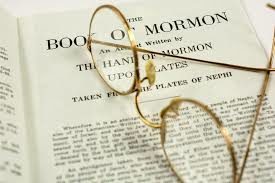 From time to time Mormons come up with what they regard as ‘substantive’ evidence for the Book of Mormon. When ministries inevitably challenge and refute that evidence, Mormons insist that someone can only know the Book of Mormon is true by sincere prayer, citing Moroni’s promise from the end of the book:
From time to time Mormons come up with what they regard as ‘substantive’ evidence for the Book of Mormon. When ministries inevitably challenge and refute that evidence, Mormons insist that someone can only know the Book of Mormon is true by sincere prayer, citing Moroni’s promise from the end of the book:
‘And when ye shall receive these things, I would exhort you that ye would ask God the Eternal Father, in the name of Christ, if these things are not true; and if ye shall ask with a sincere heart, with real intent, having faith in Christ, he will manifest the truth of it unto you, by the power of the Holy Ghost.’ (Moroni 10:4)
Of course, if you have prayed and received no such confirming answer, the sincerity of your heart, the reality of your intent, and the faith you express in Christ are all called into question. Very quickly you move from their providing evidence to their doubting your integrity, followed by their challenging you to disprove their claims: ‘An unschooled youth couldn’t possibly have written it, so if it didn’t come from God, where did it come from?’
This is a classic ploy in which you build premises that can be reasonably accepted and then draw a conclusion yourself that others would not have drawn.
Here is a book – yes
Mormons regard it as Scripture – yes
It is controversial – yes
An alternative provenance cannot be shown than that claimed for it – yes
Therefore the provenance claimed for it must be true –
But it is not for those who challenge Mormon claims to prove anything. It is for those who wish to add this book to the established Word of God to demonstrate that their claims, even if questioned, are yet reasonable. Not everyone believes in the Bible yet there are reasons to believe the Bible is at least an historical document and, where it speaks historically, an accurate document. No one doubts the Bible’s historicity, no one claims it is a product of the 19th century, the work of medieval reformers, or the imaginings of early medieval monasticism. We cannot speak so confidently about the Book of Mormon.
Ancient Money System
I came across this blog post which references a larger article claiming to bring ‘surprising evidences for the Book of Mormon.’ The first blog pulled out two ‘evidences’ they found especially compelling. One is the money system in the Book of Mormon. The claim is that ancient money systems were binary because ancient civilisations, such as Egyptians, did not know about fractions as we understand them today. Evidence, they insists, that ‘the money system described in the Book of Mormon is definitely an ancient one due to its binary system.’
Showing that the money system in the Book of Mormon has ancient parallels because of its binary nature does not prove the book itself to be ancient. That is rather like finding a first edition Gutenberg Bible on my shelf and claiming I must, therefore, have been around when it was printed. Indeed, if ‘a barely literate farm-boy,’ as Joseph Smith is fondly portrayed, were to invent a money system surely it would be a simple system. If his sources for the work were themselves ancient, such as the Bible, surely a binary system would be inevitable.
Unlike the Bible, not a scrap of archaeological evidence has been found to verify the historical claims of the Book of Mormon. Not a city, not a town, not a building, not a brick or a stone, not a pot or a shard, not an arrowhead – not a coin. Perhaps before speculating about the ancient nature of Mormon money some should be produced to show its existence.
Not Coins?
The rebuttal to that argument is that the Book of Mormon doesn’t claim to be talking about coins but about weights and measures. These can be found in Alma 11 where we find:
‘Now the reckoning is thus—a senine of gold, a seon of gold, a shum of gold, and a limnah of gold.
A senum of silver, an amnor of silver, an ezrom of silver, and an onti of silver.
A senum of silver was equal to a senine of gold, and either for a measure of barley, and also for a measure of every kind of grain.
Now the amount of a seon of gold was twice the value of a senine…’
And so forth.
The problem is the Book of Mormon, in the same chapter, refers to money: ‘Now, it was for the sole purpose to get gain…that they might get more money according to the suits which were brought before them…’ (referring to unjust judges Alma 11:20) The claim is that these means of exchange comprise ‘commodity money,’ an ancient form of exchange the worth of which comes from the intrinsic value of the object of exchange; gold, silver, etc.
But the chapter heading refers to ‘Nephite coinage set forth.’
“Chapter 11
The Nephite monetary system is set forth—Amulek contends with Zeezrom—Christ will not save people in their sins—Only those who inherit the kingdom of heaven are saved—All men will rise in immortality—There is no death after the Resurrection. About 82 B.C.”
This is the relatively modern fiat money system in which tokens are exchanged such as a cheque, paper bill, or coins which have no intrinsic value but which represent, or are tokens of an agreed value. And even if the coins have an intrinsic value because they are made of precious metals they are still coins, and none have ever been found. Yet, the chapter heading says ‘coins.’
Oh, the argument goes, but the chapter headings are not part of the original Book of Mormon. Like the introduction, they were added latterly by Bruce R McConkie. Of course, anyone who knows Mormonism will know that McConkie is the favourite whipping boy when it comes to Mormon doctrinal controversies.’Oh, brother McConkie wrote it. weeaall…’ And so he is dismissed. But consider this statement from no greater authority than Robert Millet:
‘I think it would be no breach of etiquette or of confidentiality if I were to say with pleasure that Elder Bruce R. McConkie produced those headings. Now I don’t know anybody else who could do it so well. All of the headings are definitive and interpretive; they are a valuable part of the new edition of the scriptures. Occasionally people say to me, “We have a marvelous topical guide” (and let me say that there are people here who helped on the topical guide), “there are a lot of other good things in this new edition of the scriptures, but there is no commentary.” It struck me one day that the commentary is in the chapter headings. In fact, try this exercise sometime. Start with Genesis and just read the headings–Genesis 1, then Genesis 2, Genesis 3, and do this for about fifteen chapters. You’ll see that those headings are not only good for the chapter in which they are placed, but they are consecutive and relate well to one another.’ (Monte S. Nyman and Robert L. Millet, The Joseph Smith Translation, p.300-301)
If McConkie’s headings are good enough for the Joseph Smith Translation they must surely be good enough for the Book of Mormon.
The Real Problem
The problem here, of course, is not this rabbit-hole chasing game we often end up playing but the overall picture that emerges when you step back and take a good look. There is evidence, compelling evidence, until it is challenged and then it doesn’t matter and the inquirer is directed to the prayer room, but when the ‘right’ answer is not forthcoming their integrity is questioned. There is evidence to the contrary but that is questioned even if it means denouncing one of their own, a Mormon apostle. All the time they cannot see that if what an apostle has included in the book cannot be trusted, the evidence they wished would impress us proves worthless, and the contrary evidence strong we will not believe their claims.

